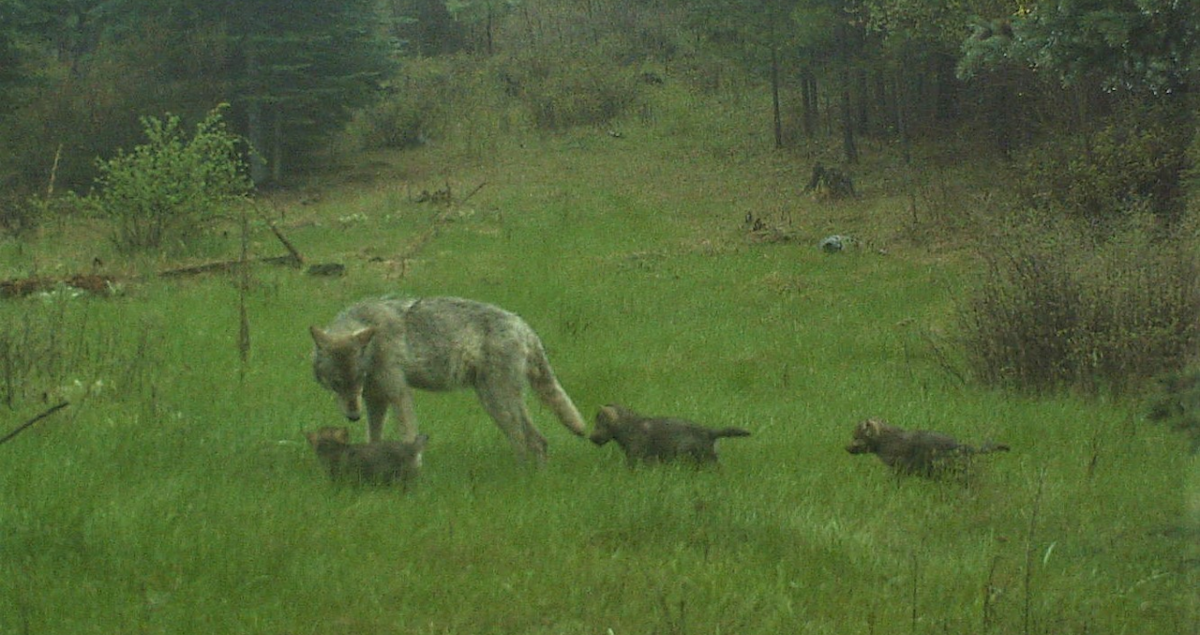
Comment Opens On WDFW Proposal To Downlist Wolves
The process may be a bit arcane to the lay reader, but WDFW is now seeking public comment on its official proposal to downlist gray wolves in Washington from state endangered to sensitive status.

“Wolves in Washington have made significant progress toward recovery since their original state endangered listing in 1980, when there were no known breeding wolves in the state,” said Julia Smith, WDFW’s Endangered Species Recovery Section manager, in a press release out today. “This recommended reclassification to sensitive reflects that progress and most accurately describes the current status of wolves in Washington, while also recognizing that wolves are not yet established in Western Washington and should remain protected.”
If you’re getting strong déjà-vu-all-over again vibes, it’s because last May WDFW asked for comment on its draft periodic status review recommending this very same downlisting.
“The PSR process is now done and we filed the CR-102 today, which is the notice used to publish the text of the proposed rule that resulted from the PSR,” explained Staci Lehman, an agency spokeswoman in Spokane. “So the proposal hasn’t changed, we’re just moving forward with the process to do a rule change, which requires a public comment period.”
Input runs through May 6 and you can do so online, or via email, voice message or writing to WDFW – see this link for details on those avenues.
The proposal will also come before the Fish and Wildlife Commission in mid-March ahead of members’ scheduled June 19-20 decision.
Potential downlisting does not mean wolves will be hunted by WDFW-licensed tagholders anytime soon, but it is a positive step acknowledging the strong growth of the Washington’s Canis lupus population since the first confirmed modern-day pack was discovered in the Methow Valley and all the effort – grudging and otherwise – that has gone into that. PSRs are performed every five year to figure out if a population requires a status change.
There was a minimum – meaning at the very least and surely a whole helluva lot more – of 216 wolves in 37 packs and 26 successful breeding pairs at the end of 2022, figures that are likely to rise when WDFW issues its 2023 year-end count in April, although growth does appear to be slowing as wolves fill in their best habitat, the agency notes in setting expectations in the coming years.
Even as the statewide number of successful breeding pairs has topped minimums called out in 2011’s wolf management plan and modeling says the state’s population “currently occupies an area essential to their long-term survival and is not in danger of extinction or becoming endangered with their current distribution and population trend,” the species has been slow to reach the Southern Cascades and Northwest Coast Recovery Zone, the third of three geographic regions required to hold wolves under that 12-plus-year-old guidance document.
While there was a recognized pack in the South Cascades near Mount Adams in that 2022 count, recent indications suggest only one of the two animals is in the neighborhood. Still, that aforementioned population modeling, which used data from only Washington wolves, suggests there’s a 100 percent chance of colonization by 2030.
It will be interesting to see where the Fish and Wildlife Commission lands this June: Go with the agency’s biologists and science behind the downlisting recommendation, or with Governor Jay Inslee who appointed them and weighed in against downlisting?
Inslee’s comments raised hackles last year with WDFW Director Kelly Susewind, who wrote that making the request to the “decision makers you appoint even before the Department completes its recommendation is premature and undermines the process.”
Predator advocates will also claim the state’s wolves are imperilled, but the fact of the matter is that the strongest numbers are where WDFW is actively managing them in terms of livestock conflict and two tribes are hunting them.
Wolves have been in the news of late. A bill passed unanimously out of a House committee in Olympia would require WDFW to coordinate management north of the Colville Reservation with how tribal wildlife managers handle the species inside their 1.4-million-acre reservation.
And earlier this month the U.S. Fish & Wildlife Service said they “do not meet the definition of an endangered species or a threatened species” in the Northern Rockies or Western United States in response to petitions seeking to federally list them in response to Idaho and Montana management.
The decision did not change the status of wolves in Washington – federally delisted in the eastern third, federally listed in the western two-thirds, and state listed throughout.
But now WDFW wants to downlist them from endangered to sensitive. Baby steps!
